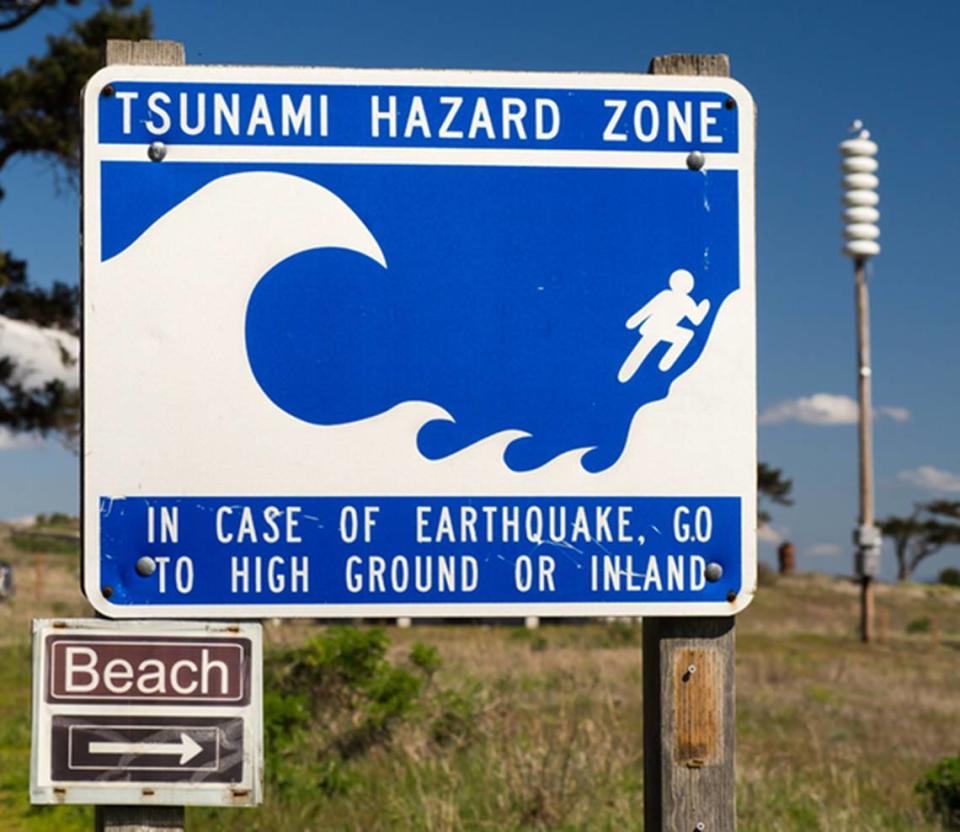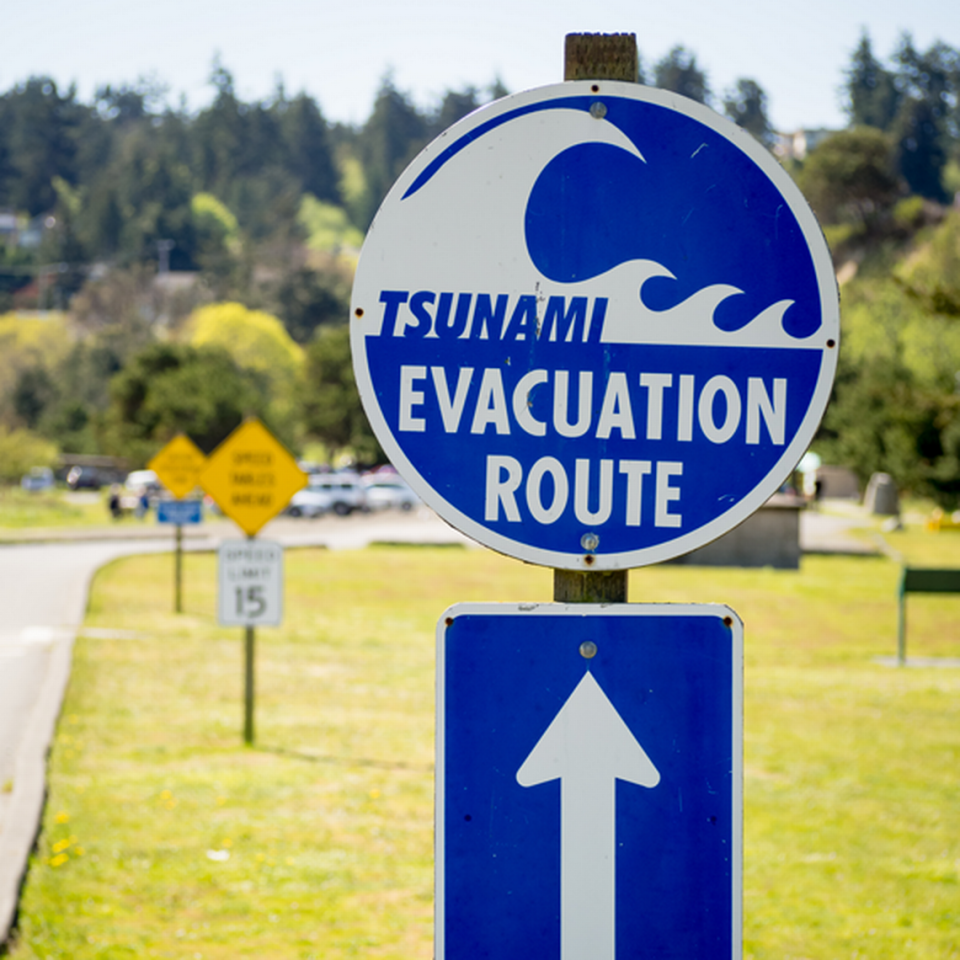Planning to visit WA’s beaches? What to know about the coastal tsunami alert system
As temperatures slowly rise across Washington state, tourism to oceanfront spots will continue to increase, too. But visitors to the Evergreen State’s Pacific Ocean coast should be familiar with the state’s tsunami alert system, which offers varying levels of information to people nearby based on potential threats.
Tsunami preparedness in Washington has grown in recent years, and for good reason. Washington state has more than 3,000 miles of coastline that is home to 58 coastal communities and sees millions of visitors annually. It is also a known high-risk zone for tsunamis, according to the Washington State Department of Natural Resources (DNR).
It is highly likely more tsunamis will hit in the future.
In light of that risk, experts will meet in Ocean Shores May 10 to discuss new developments, including the state’s recent investment in creating vertical evacuation structures, following the success of the structure built by the Shoalwater Bay Indian Tribe.

WA coast tsunami worries
Current research suggests that Washington has the second highest seismic risk in the country, behind California. The state’s entire coastline is at risk, so if you feel an earthquake while near the ocean, evacuate to higher ground or move inland. Do not wait.
DNR describes a tsunami as a series of really long and unusually powerful waves, caused by a seismic event like an earthquake that shifts the water suddenly. In Washington, the majority of tsunami activity is caused by seismic activity.
When tsunamis form, water moves outward in all directions. The force of this movement contributes to the size of the tsunami, allowing it to grow during the sudden shifts. Depending on the size and topographical conditions, some tsunamis can travel across a whole ocean in under a day. Once tsunami waves hit a shore, they can keep coming for several hours, like observed in the Tohoku tsunami waves.
WA tsunami preparation & response
The most crucial part of tsunami preparedness is connection to communication systems. If you receive any kind of tsunami warning, evacuate immediately. Do not wait and do not return until given the OK from officials.
There are several types of tsunami alert systems.
Local governments will likely have a regional alert system. Research the county you’re traveling to before arriving so you know the safety protocols and sign up for their alerts for your phone or email.
The Washington Emergency Management Division runs more than 120 sirens along the coast. These are outdoor notification systems meant to inform people disconnected from other alert systems. Listen to a sample to better recognize the sound.
If staying at a hotel or campground, ask staff about local tsunami safety tips.
NOAA has weather radios, several subscription options, and a live alert site. Weather radio stations vary by location.
Download apps on your phone to notify you in case of an emergency, like the NANOOS app, TsuInfo, Washington Emergency Management and more.
When traveling to an area with risk of tsunamis, bring a portable disaster supply kit with you. It should have everything you’d need in an emergency, along with your family members and pets. Keep one in your car, and if possible, another where you’re staying.
Wherever you go, make sure you know the evacuation routes. Many places will have arrows marking the direction to higher ground, but take note of possible routes before any signs present themselves.

Signs a tsunami is coming
The biggest indication that you should be on high tsunami risk alert is an earthquake while you’re on the coast.
There are several ways to be prepared for a tsunami. Most importantly, you should be signed up for at least one kind of tsunami alert system if visiting the coast. Pay attention to these alerts and nearby warning sirens, as these will tell you when to evacuate. But officials say you should still be aware of certain warning signs yourself, in order to be the most prepared. It is possible an imminent threat could approach before officials have time to send a warning.
▪ Earthquakes
If you feel a strong earthquake, chances are tsunami waves may follow. If you’re near the ocean or a large lake, take precaution by moving to higher ground. Earthquakes are considered ‘strong’ when they last longer than 20 seconds, damage buildings or knock people down. Washington state uses MyShake, an app offering notification options for earthquake warnings.
▪ Large wave approaching
This may seem obvious, but if a very large wave that looks different than normal is approaching, it’s a good idea to move to higher ground or go farther inland. Tsunami waves take different shape than normal waves, which can give you a good indication of what’s coming.
▪ Coastal water recession
When a tsunami gets close, the tide level will often drop quickly as the wave gathers strength and grows. If the water is receding rapidly, seemingly out of nowhere, it could be a warning sign of an approaching tsunami.
▪ Rise in sea level
Sometimes tsunamis will cause a surge of water as they approach. Just as the sea level rising can be indicative of a tsunami, another sign tends to follow in its aftermath. After water is pulled into the wave, dropping the sea level, it can lead to a large surge of water hitting the shore before the tsunami does. These surges can be damaging and dangerous, according to DNR.
▪ Falling landslide
If you’re near the water and notice a landslide fall or slide into the ocean, a large lake or river, it’s best to evacuate.
▪ Loud roar from the ocean
If you hear a loud roar from the ocean, especially if paired with any of these other signs, consider evacuating.

